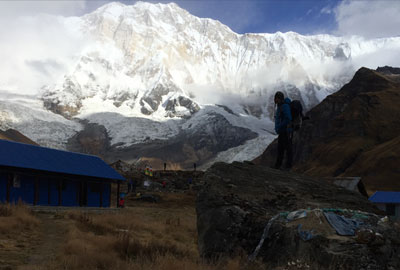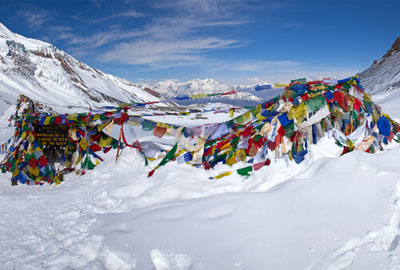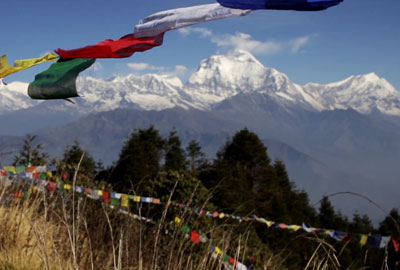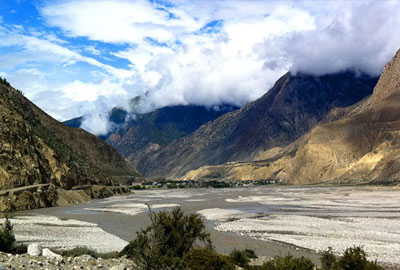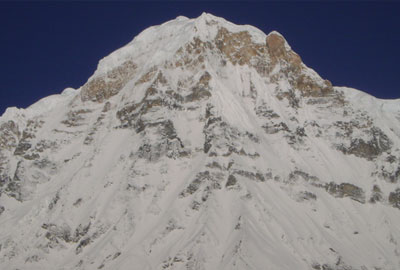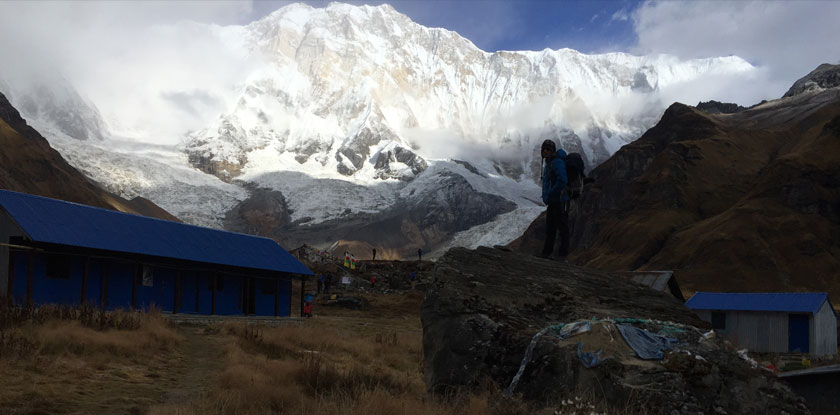
Annapurna Base Camp Trek
Annapurna base camp trek is a combination of spectacular mountain scenery with an insight knowledge of hill tribe in western Nepal. Mostly the trail passes through the mountain village, terraced farming, forest and on the higher elevation may be some pastures as well. As people reach Annapurna base camp they get a grand 360 degrees view of snowcapped mountains. Discovered in late 40’s this trek is of no second alternatives and lifetime experiences for many of our customers.Trekking in Himalaya means a lots of ups and downs but this trek is harder for exceptionally few days as you start from very low elevation and reach just 4130m. above sea level.One of our best sellers that takes you to the world’s popular hiking trails. The perfect trip for people from any age group as the hiking starts from very low elevation and reach only up to 4130 m, above sea level. The trip gives opportunity to observe Gurung culture, Magar culture, beautiful landscape, the cultivated terraces and valleys. The highlight of the trip is Annapurna Base Camp from where one can get 360 degrees snowcapped peaks is observed. The trail at the beginning passes through beautiful villages belongs to Gurung communities, as one go higher the vegetation keep changing and the landscapes too. There are few settlements after one crosses the biggest village of Chhomrong. Annapurna basecamp actually lies inside the Annapurna conservation area.
Annapurna Base Camp Trek at a glance
Maximum elevation: 4,130 meter
Number of Days: 10 days of walking
Difficulty level: Easy, but has steps ups and downs, walking in high altitude only for 2 days
Accommodation: Tea house during the trek and hotel in Kathmandu
Transportation: Private transfer and tourist bus
Price: $980 per person
Best time to go: March- May and September-November but can be operated throughout the year
The highlight of the trip
The major highlight of the trip is of course the Annapurna Base Camp which is located in the elevation of 4130 m. As the view from Basecamp is of unparalleled beauty the area is considered special. Besides the basecamp Poonhill or the village of Ghorepani considered another highlight of the trip as the view is one of the best as well as the village itself is located amidst the forest of rhododendron, when rhododendron blooms in the spring season i.e. March and April the whole area is considered part of the paradise in the earth. The trek is also popular to discover the culture of Gurung people with their customs, festivals, language and lifestyles. The housing pattern of this hill tribe is different than any other ethnic group in the Himalayas. The clustered houses with slate roof and painted brightly with red and white natural clay mark their house different than others. Most of the biggest Gurung villages organize even the Rodhi with singing and dancing as entertainment for young people in the village. The tribe is also popular to work in British military where they formed Gurkha regiments. A conversation with the retired gurkha is highly appreciable for many of the trekkers.
Difficulty level of the trip
The difficulty level is the parameter which is very hard to tell as it varies from individual to individual. Himalayan Travel Consultant consider this trek as of easy to medium difficult because there are some days our client need to make lots of steps going up and some days you have to make lots of steps down. Some part of the trail even they haven’t made the steps, it looks more natural. The second day of the trek as they have to make from Tikhedhunga to Ghorepani almost 3500 steps and the first part does not have much shades make people tired and over exhausted, once you make this part rest of the days seems much more comfortable. As the trek does not go to very high elevation there is very less chance that people get acute mountain sickness in this trek.
The best time to go
People can go to Annapurna Base Camp throughout the year but the best season is from March up to June and September up to December. January and February seems too cold in the mountain but still got best views. July and August is rainy season in the area so it might be cloudy and the views might be blocked due to the clouds.
Duration of the trip
The trip is planned for 15 days which include a day sightseeing in Kathmandu to explore the world heritage sites in Kathmandu also. The itineraries are well organized for the successful ascent up to the Base camp.
Annapurna Base Camp Trek Route
There are different routes to go to Annapurna Base Camp. Most of the people they take a transfer from Pokhara to Nayapul which is 40 kilometers west of Pokhara. Now the vehicle can easily reach Birethanti as well. It takes half an hour to 45 minutes to reach Birethanti from Nayapul by walk. Going to ABC they climb to Ghorepani and go down to Tadapani and Chhromrong and follow the Modi River upstream to reach Annapurna Base camp.
The classical route is by driving up to Phedi, 15 km from Pokhara and hike to Dhampus. From Dhampus one can go to Landruk, New Bridge and Chhomrong directly and follow the Modi River upstream.
The shortest route is following the Modi River upstream from Birethanti and reaches Chhomrong via Jhinudanda and follows the Modi River upstream. Retrace back the same route one can make ABC trek in very few days but the popular view point of Poonhill and amazing village of Ghandruk are missing.
Every route has their own benefits, so we recommend our valuable customers the best route possible so they can take full advantage of hiking to the Annapurna Base Camp. Our recommended route does not miss popular view points and interesting villages on the way. With money and time constraints we are flexible to personalize the route according to client’s needs.
The price of the trip
The price varies with accommodation in Kathmandu and Pokhara as well as the means of transportation used from Kathmandu to Pokhara and vice versa. Please feel free to write to us regarding price considering the type of accommodation and type of transportation you like to use. We calculated our standard price with standard accommodation up above.
Is this trip ideal for me?
As it depends with individuals whether the trip is right for you or not, this trip is for individuals who are able to walk 15-20 kilometers a day in different type of terrains. During this trip there will be lots of ups and down as the trip starts at an elevation of about 1000 meters above sea level reach 4130 meters above sea level and end up at the same elevation. If you are fit to make all these ups and downs, have zeal to see the spectacular view of snowcapped mountains we recommend this trip for our valuable customers. Besides the physical fitness the mental fitness also necessary as the accommodations are very basic and if you go in the main season even our customers need to share an accommodation especially in higher elevation like Deurali and above. There are limited beds there and numbers of visitors are much higher than the number of the beds available. The facilities are not of western standard and very basic. The foods they serve in the mountains are fresh but still very simple and the cost of the food is higher than in the lower elevation. So the individuals who are prepared to adopt with all these situations and love adventure with or without prior experience enjoy the trip very much.



